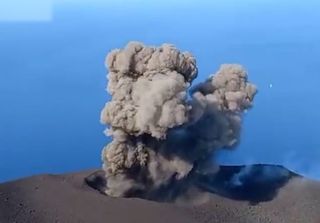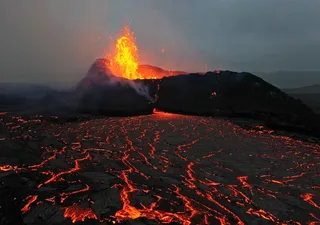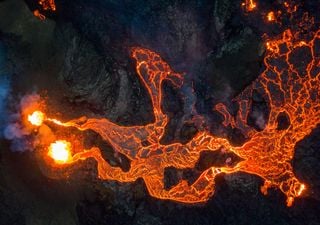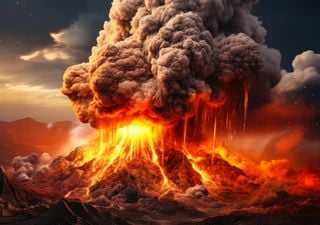On Earth There is a Volcano With "Cold" and Black Lava
In Tanzania there is a very particular volcano with the temperature of the lava much lower than other volcanoes and furthermore this is dark in colour, almost black.
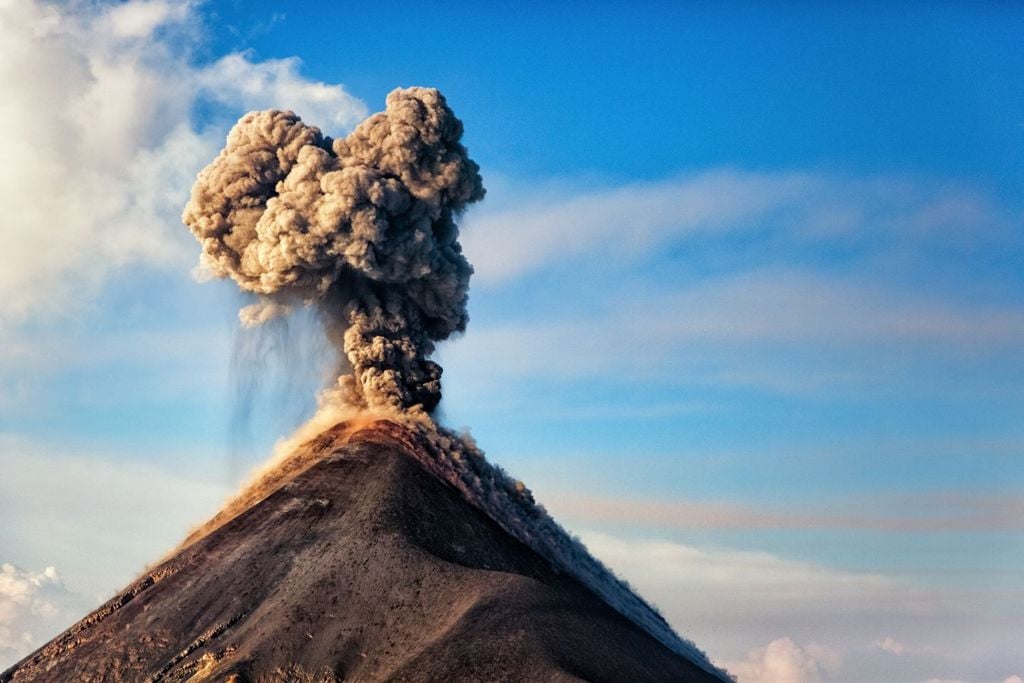
It is called OI Doinyo Lengai, it is located in northern Tanzania, near the Rift Valley, at an altitude of almost 3,000 meters above sea level, and is probably the strangest volcano in the world.
It is a stratovolcano, or a conical volcano consisting of the overlapping of various layers of solidified lava, volcanic ash, tephra and pumice. This type of volcano, the most common on our planet, is characterized by fairly steep slopes and periodic explosive eruptions.
A one-of-a-kind volcano
There are two quirks of this volcano but they both concern its lava: its color and its temperature.
In fact, if the typical temperature of the magma that escapes from the volcanoes is between 700 ° C and 1200 ° C, that of the OI Doinyo Lengai volcano remains around 500 ° C, obviously very high but almost half compared to its peers.

In addition, also thanks to this 'low' temperature, lava has a very dark color, almost black, unlike the one we usually observe which instead has colors on red and orange.
In reality, however, these two differences have the same cause: the very particular composition of the lava.
In fact, this is currently the only active volcano in the world with “natrocarbonatite” eruptions, where magma is composed mostly of calcium, sodium and dissolved CO2 and is poor in silicate minerals. This composition causes the melting temperature of this lava to be lower than that of silica-rich magma. This therefore leads to a lower average lava temperature and also to the darker color.
Looking at some images of the eruptions of this volcano we also realize how its lava is very liquid, to the point of looking like water, mud or at most motor oil (obviously very dark).
The lava has a very particular composition
The reason is always the same and concerns the composition of the magma which causes the lava to have a very low viscosity, considerably lower than that of other volcanoes. In fact, the scarcity of silica leads to a low polymerization that makes the lava more fluid.

As for the history of this volcano it would seem quite recent, in fact according to experts it was formed only 370,000 years ago.
In reality, in this volcano there would seem to be the presence of two liquids that do not mix with each other: one dense, silicate, similar to that of other volcanoes; one less dense and carbonated. This sort of duality of the volcano is also confirmed by historical observations of its eruptions.
In fact, according to historical data, the volcanic activity of the OI Doinyo Lengai is characterized by the alternation of effusive phases, lasting months or even years and affecting almost exclusively the northern area of the volcanic crater, and explosive phases with Plinian-volcanian eruptions that instead have a duration of a few weeks or at most a few months.
The first, the effusive ones, consist mainly of carbonate, dark, cold and very fluid lava; the others, the explosive ones, are linked to silicate magma.
This is also consistent with the structure of the volcano itself, which to be a stratovolcano necessarily needs a more viscous component that allows the stratification of matter.





